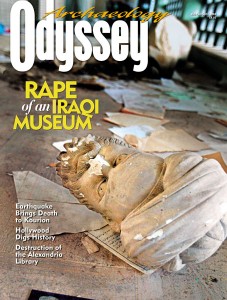Ancient Life: Childhood’s End
Scenes from a young life
In ancient Rome, life was perilous for the young. About a third of Rome’s children were stillborn or died in infancy—and many others never made it past childhood. To honor their son, the parents of M. Cornelius Statius, who died at the age of eight in the mid-second century A.D., commissioned a lovely marble sarcophagus, carved with relief scenes from his brief life.
Soon after birth, infants born to the privileged classes were bathed and placed at the feet of their fathers, who signaled acceptance of the child by ordering that the infant be fed. (Under Roman law a father could order that his own child be starved, smothered or abandoned—as was indeed often done with deformed or otherwise undesirable infants.)
Although most babies were nursed by their mothers (see below, left), many noble women turned the job over to wet nurses. On the ninth day after birth, the infant was named and given a circular pendant made of gold or leather. Girls wore the pendant until they married, and boys wore it until their mid-teens, though they sometimes donned it again on special occasions in later life.

For Romans, healthy sons were cause for special celebration. In the second scene in the relief (see detail, below), M. Cornelius Statius’s father accepts his paternal responsibilities by picking up the infant—in a ceremony known as the sublatus.
Already a library member? Log in here.
Institution user? Log in with your IP address.

